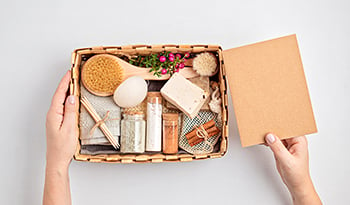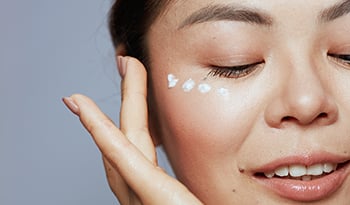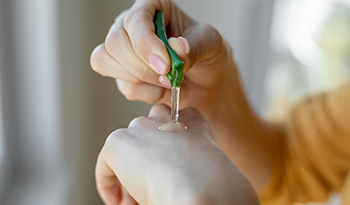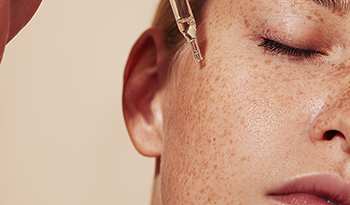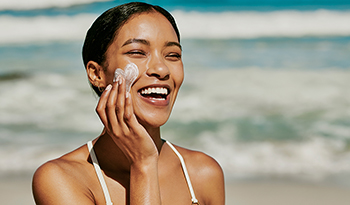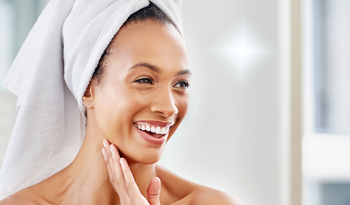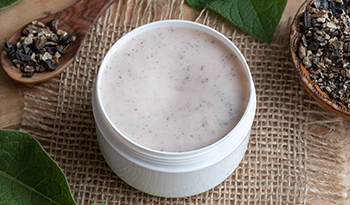What are AHAs, BHAs, PHAs and LHAs?
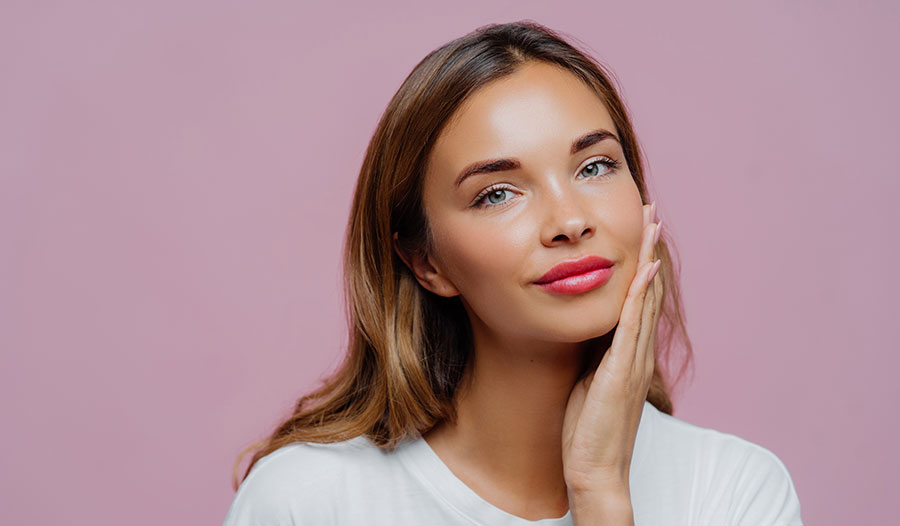
AHAs, BHAs, PHAs, and LHAs. The letters may seem like some kind of indecipherable code or an alphabet soup, but each of the abbreviations actually represents important terms within skincare ingredient labeling. Collectively, these abbreviations all describe different types of hydroxy acids that are used in skincare products. They are generally used for exfoliation, which can improve the appearance of the texture and tone of the skin. Chemical exfoliation with products like these is preferred over rough, abrasive physical exfoliation, which can be too harsh on the skin.
Because these ingredients are acids, they also can be added to products to alter the pH of the formulation, which (if done correctly) can improve penetration and activity in the skin. The full names are written out as follows: alpha hydroxy acids (AHAs), beta hydroxy acids (BHAs), polyhydroxy acids (PHAs), and lipohydroxy acids (LHAs). All of these ingredients have some similarities in how they function on the skin, however, small differences in their molecular makeup lead to noticeable changes in their uses and tolerability. Here’s the breakdown.
Alpha Hydroxy Acids (AHAs)
Alpha hydroxy acids (AHAs) are some of the most popular skincare enzymes that are frequently used in dermatology. Some of the most common AHAs are glycolic acid (derived from sugarcane) and lactic acid (derived from multiple sources, one of which is milk). Lactic acid is a larger molecule than glycolic acid, which means it doesn’t penetrate as deeply into the skin, so it is a bit gentler than glycolic acid. Other alpha hydroxy acids include hydroxycaprylic acid, hydroxycapric acid, citric acid, and mandelic acid.
AHAs are fairly well-studied and have been shown to have anti-aging effects by improving skin tone, texture, fine lines, and hyperpigmentation. In higher concentrations, some of these are even used as superficial and medium-depth peeling agents in dermatology offices. In lower concentrations, such as those you would find in skincare products, the AHAs act as mild chemical exfoliators, which can have a brightening and smoothing effect.
Beta Hydroxy Acids (BHAs)
Beta hydroxy acids (BHAs) are closely related to AHAs, but with some molecular structural differences that make them unique from a lot of the other hydroxy acids.
BHAs (such as salicylic acid) are less strong than AHAs (like glycolic acid), so they can be useful for people who are looking for a gentler alternative. BHAs also can be useful for people with oily, acne-prone skin because they are lipophilic (fat-soluble), which allows them to penetrate the oily, sebum-rich pores more easily. Therefore, in addition to having keratolytic (exfoliating) properties, they are also comedolytic (acne-fighting). Next time you’re at the drug store, take a stroll down the cosmetic aisle and you’ll notice that a lot of the acne skincare products contain salicylic acid, and now you’ll know why!
Because BHAs are gentler than AHAs, when comparing higher concentrations, BHAs have more predictable results and are less likely to cause post-inflammatory hyperpigmentation, making salicylic acid peels a safer option for darker pigmented skin types than some of the other stronger peels.
If you think a BHA-containing product is the right choice for you, there are several ingredients you can search for. By far, the most common BHA marketed in cosmetic products is salicylic acid and its related derivatives (salicylate, sodium salicylate, and willow bark extract). BHAs also may show up in an ingredient list as beta hydroxybutanoic acid, tropic acid, and trethocanic acid.
Polyhydroxy Acids (PHAs)
Polyhydroxy acids (PHAs) include the ingredients such as gluconolactone, galactose, and lactobionic acid. PHAs are also chemical exfoliators (keratolytics) that can help even out skin tone and texture, as well as enhance penetration of other ingredients. PHAs also help draw water into the skin, so they are useful as moisturizers (humectants). Compared with other skincare exfoliants, PHAs are larger molecules than AHAs or BHAs. Therefore, PHAs penetrate the skin more slowly and less deeply, thereby decreasing the potential side effects such as irritation and dryness.
PHAs can be a good option for people with sensitive skin types, such as those with rosacea or atopic dermatitis. However, it’s always a good idea to consult your dermatologist first before adding new products. PHAs are generally better tolerated than the other exfoliators and are easier to combine with other ingredients. PHAs are also thought to have antioxidative properties which help combat damage to the skin.
Lipohydroxy Acids (LHAs)
Lipohydroxy acids (LHAs) are derivatives of salicylic acid. You may also see them referred to as 2-hydroxy-5-octanoyl benzoic acid, beta lipohydroxy acid, or caprylolyl salicylic acid. LHA is a larger molecule than salicylic acid, and it has an extra fatty chain. Because of these characteristics, LHAs penetrate the skin more slowly, leading to a more gradual shedding of the outer layer of the skin. This translates to gentler effects.
The extra fatty chain on LHAs makes them more lipophilic than salicylic acid, which means LHAs are even better than salicylic acid at breaking up the oil-rich sebum that clogs pores. Therefore, LHAs are an excellent choice for people with oily skin and acne. Some studies have even shown that LHAs can enhance dermal thickening by stimulating skin components like collagen and elastin, which is important because as we age, we gradually lose collagen and elastin in the skin.
Side Effects of AHAs, BHAs, PHAs, and LHAs
Because all of these ingredients act to shed the surface layer of the skin, the side effects include redness, irritation, and peeling. Some brief stinging after application may be normal, but prolonged burning and stinging could be a sign to stop using the product. You should consult your dermatologist if questionable symptoms arise.
Chemical exfoliators like these also can make the skin more sensitive to the sun (UV radiation), meaning the skin can burn more easily. Therefore, it’s important to limit sun exposure. If in the sun, practice good sun protection with hats and sunscreen with SPF 30 or higher every day, reapplied at least every two hours.
When starting a new skincare product, it’s always a good rule of thumb to test the product on a small, inconspicuous area first, to make sure your skin can tolerate it. A good spot for this can be on the inside of the arm or inner elbow crease. Finally, if you’re pregnant, you should consult your physician before starting any new products.
How to Incorporate AHAs, BHAs, PHAs, and LHAs into Your Skincare Routine
The first thing to know is that you probably don’t want to incorporate all of these acids into your skincare routine. Using all of these in your regimen would likely be way too much exfoliation and could lead to peeling, irritation, and redness. I would stick with one or two, depending on your skin type and skincare goals.
In general, exfoliation should be done no more than three or four times a week. How frequently you should exfoliate will depend on the concentration of the exfoliant, what other skincare products you are using (such as retinoids, benzoyl peroxide, other exfoliators), your skin type, and even the season and local climate. For example, retinoids and benzoyl peroxide can also have side effects of dryness and irritation, so if you’re using those, you may only want to use one of these exfoliators once or twice a week, if at all. Similarly, people with sensitive skin may not be able to tolerate using chemical exfoliators more than once or twice a week. It’s important to “listen to your skin” and pay attention to how the products affect your individual skin.
People living in dry climates (or during the winter when there is less moisture in the air) also may have to cut back on exfoliation. If too much irritation and dryness occur, I recommend backing off and stopping, or limiting use to once or twice a week and working on really good moisturization and sun protection. Another trick you can use to make the product more tolerable is to try one that comes as a wash instead of a leave-on product. As you can imagine, leave-on products stay on the skin longer, so they are more likely to cause side effects.
DISCLAIMER:This Wellness Hub does not intend to provide diagnosis...













































































 Table of Contents
Table of Contents



